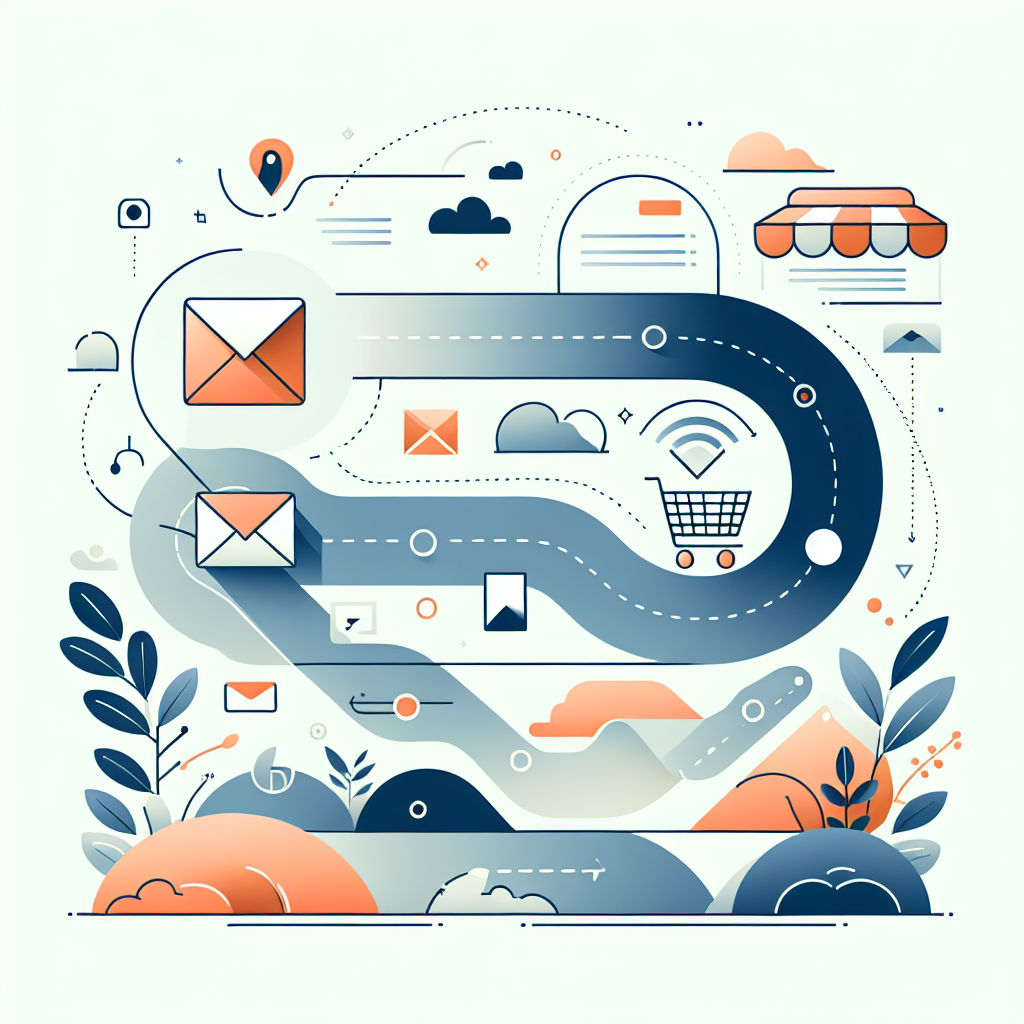Hey there! If you’re running an online shop or thinking about it, you’ve probably heard a ton about email marketing. But what’s the real buzz about it? Trust me, it’s more than just sending out random newsletters to your subscribers. It’s about creating this smooth customer journey that feels personal and intuitive—like having a friendly guide leading you through an amazing store. Ready to dive into how we can make that happen? Let’s chat, friend.
Understanding the Customer Journey
What is a Customer Journey?
Imagine going on a road trip. Before you start the engine, you usually have an idea of where you’re going, right? Same thing with customers. Their journey starts way before they click ‘Buy Now’. It’s a path they follow from the time they become aware of your product all the way through to purchase and beyond.
Now, you might be wondering how email fits into this grand adventure. Hold tight, we’ll get to that—it’s like the GPS for your customers, guiding them along every turn.
Email’s Role in the Customer Journey
Starting with a Welcome
So, someone’s interested in your shop and signs up for emails. This is your chance to roll out the red carpet and show them around. A welcome email isn’t just polite—it’s the start of a beautiful friendship. Be warm, be informative, and show them the perks of hanging with you.
Guiding Through Engagement
Now you’ve got their attention; it’s time to keep it. Engagement emails are like the intriguing billboards along the journey. They’re not too pushy but offer valuable tidbits—maybe tips on how to use your products better, customer spotlights, or members-only deals. The key? Make ’em feel special.
Nurturing Leads to Conversation
Here’s where the magic happens. Not everyone will buy the first, second, or even third time you chat. With nurturing emails, it’s about patience and timing. Hammering out deals won’t build a relationship; sending content that resonates with their needs will.
Personalizing the Experience
It’s in the Data
Personalization isn’t about throwing their name on top. It’s deeper—knowing their interests, past purchases, and even browsing behavior. Use data to tailor the experience. It’s like remembering someone’s favorite ice cream flavor—it shows you care.
Segmentation is Your Best Friend
One-size-fits-all is a myth, especially in emails. Create segments in your email list based on customers’ behaviors and preferences, and watch your relevance score soar.
Timing is Everything
Automated Doesn’t Mean Robotic
Ever heard of email automation? It’s a lifesaver. Set up emails that trigger off of customer actions—like abandoning a cart. But here’s the thing: just because it’s automated doesn’t mean it can’t be human. Personal touches in these emails can be the difference between lost and found sales.
Testing and Refining
A/B Testing is Your Compass
Nobody gets it perfect straight out of the gate. By A/B testing different email elements, you can see what resonates. Small tweaks, like subject line changes, can lead to a flood of opens. It’s like trying two different spice blends to see which makes the dish sing.
The Tools of the Trade
Picking the Right Email Marketing Platform
There are tons of tools out there. Some are like swiss army knives, some are more like specialized fishing gear. You need something that fits your business size, integrates with your shop, and doesn’t drive you up the wall. Personal faves? There’s Klaviyo, Mailchimp, and Campaign Monitor, for starters.
Measuring Success
KPIs That Matter
You can’t manage what you don’t measure. Click-through rates, conversion rates, and unsubscribes—these are the numbers that show if you’re on track or not. It’s the fuel gauge on your road trip. Keep an eye on it!
Putting It All Into Practice
Building a Workflow
All the theory’s great, but how about real life? Build a workflow. Start with a sign-up trigger, lead into a welcome series, and follow with regular, personalized communication. Come off as a friend recommending something great, not a salesperson.
FAQs Section
How often should I send marketing emails?
It’s a balancing act. Too many, and you’re spammy. Too few, and they forget you. Rule of thumb? Start with a weekly or bi-weekly touchpoint and go from there, based on engagement.
What content should I include in my emails?
Ah, the golden question. It’s about value. Share content that helps your customer—be it how to use your products, industry news, or even just a heartwarming story. And always, always have a clear call-to-action.
How do I avoid my emails landing in the spam folder?
Keep it clean. Don’t use deceptive subject lines, balance images with text, and always include a straightforward way to unsubscribe. And make sure your email provider ain’t on any naughty lists.
How can I increase my email open rates?
First, write subject lines that hook attention without being clickbait. Second, send at the times your subscribers actually read mail. Lastly, keep refining. Review what’s working and what’s not, and adjust accordingly.
What’s the best way to segment my email list?
Look for common denominators. Buying behavior, product preferences, location, even the time they signed up can tell you a lot about how to segment. Use that as your starting point.
Grab yourself a cup of joe and pat yourself on the back. Diving into this was no small feat, and look at you, all armed and ready to make email marketing your secret weapon. Remember, it’s a journey for you, too. So, keep learning, keep testing, and make that customer experience smoother than a fresh jar of Skippy. Your online shop visitors will thank you for it—trust me!

Leave a Reply